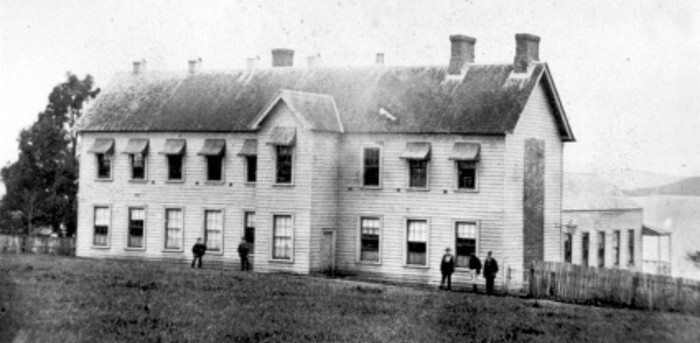Minimum Wages: A Lot Newer Than You Think

We’re just gonna come right out and say it: It’s banana nuts that minimum wage laws haven’t existed as long as wages and laws. To our modern minds, it’s immediately obvious that offering a handful of change and a bag of Skittles for manning an industrial sewing machine all day is a human rights violation, but the history of the minimum wage is bafflingly complicated and disturbingly short.
The Idea of a Minimum Wage

The idea of installing a floor of wages that people could actually live on didn’t occur to anyone until 1831, when workers in Lyons, France’s silk industry went on strike. It was the 19th century, so the silk barons were like “Har, har, I’d rather eat my monocle, now work or die, you peasants,” but others started to think they were onto something.
The First Minimum Wage Laws

The first minimum wage laws were passed in New Zealand in 1894, but they also banned strikes, so it was a real “Are you happy now?” situation. Within about a decade, Australia and Great Britain followed suit. Yes, there is a glaring hole in that list.
Minimum Wage Laws in the United States
Here in the U.S., we’re a little more cautious about doing things that might help anyone, so while legislators passed minimum wage laws throughout the Progressive Era, the Supreme Court declared them unconstitutional. It violated employers’ rights to be exploitative dickheads, you see.
The First State Laws

Massachusetts passed the first state-level minimum wage law in 1912, but it was a lot different from today’s minimum wage laws in that it didn’t actually establish a minimum wage. The law only required the formation of a committee to whom employees could complain about low pay, and if they were found to have merit, their employer was named and shamed in the local paper. It also only applied to women and children, so men’s rights activists would have been reasonable at the time.
The National Industry Recovery Act

In 1933, President Roosevelt took the first step toward a national minimum wage by signing the National Industry Recovery Act, which basically required employers in the same industry to get together and decide what a fair wage is. The only thing it really changed was that everyone agreed exactly how much to screw their workers over.
The National Industry Recovery Act, Part Two
Two years later, even these “fair trade codes” were struck down by the Supreme Court, although not on lofty philosophical grounds. It turns out the National Recovery Administration had neglected to actually run the act by Congress. Oops!
The Washington Precedent

The tides of legal opinion of the minimum wage began to turn in 1937, when the Supreme Court ruled that a Washington hotel company had to pay its workers the state minimum wage. That was only about $300 in today’s money for 48 hours of work, but it was something!
The Fair Labor Standards Act

In 1938, Congress (this time) finally established a national minimum wage with the Fair Labor Standards Act. It was only 25 cents, or $5.25 in today’s money, but no one ever said the minimum wage wasn’t stupid, terrible, and entirely inadequate.
A Roller Coaster That Only Goes Up
That might be why the federal minimum wage was raised immediately the next year to $6.39 in today’s money, then in 1945 to $6.58, then majorly in 1950 to $9.22. Yes, that’s more than it is today.
What Does “Federal” Mean, Anyway?
Until 1961, federal minimum wage laws only applied to businesses involved in interstate commerce, which is what the federal government had decided was their scope. That year, though, the law was expanded to cover way more employees because it turns out the federal government can be whatever we want it to be.
Students Aren’t People

The same year, Congress decided it was okay to pay full-time students less than the minimum wage, displaying a grave misunderstanding of what words mean, but only 15% less. This was a huge 180, considering children were one of the few groups initially protected by minimum wage laws, so men never had anything to complain about again.
It Turns Out Women Are

In 1963, the Equal Pay Act amended the federal minimum wage law by requiring employers to pay women the same wage as men. It didn’t provide any system of enforcement and allowed a whole bunch of exceptions, but it’s the thought that counts, right?
The Peak of Minimum Wage
In 1968, the federal minimum wage was the highest it’s ever been when adjusted for inflation at $1.60, or $13.62 in today’s money. What a world, right? The cost of living was lower, too, so 1968 was really the time to be nigh unemployable.
The Grandfather Clause

The federal minimum wage was amended a lot in the intervening decades, but by 1990, it still only covered employees in a few sectors. The grandfather clause introduced that year extended it to basically everyone, so suck it, small businesses.
A Long Way to Go

The last time the minimum wage was raised was 2009, when it was set at $7.25. Inflation has increased 38% since then, so if any politicians are out there, that might be something to look into. This is definitely the first time it’s been brought to your attention.
Top image: Steven Cleghorn/Unsplash